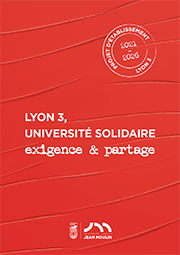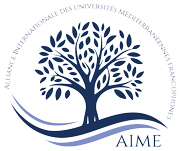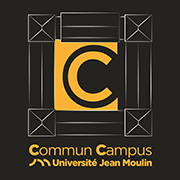AccueilRechercheProgrammes et productions scientifiquesThèsesThèses soutenuesThèses soutenues - 2006-2021Thèses soutenues - 2011
-
Partager cette page
- Recherche,
ABDEL-WAHED Aliaa
Poétique de l'encadrement dans "La mer traversée", Des Arbres dans la Tête et L'italienne au Rucher d'Hubert Nyssen
Publié le 3 janvier 2012 – Mis à jour le 18 novembre 2024
Thèse en Langue et littérature fran?aise soutenue le 13 décembre 2011.
La recherche étudie la poétique de l’encadrement dans trois ?uvres du grand écrivain belge Hubert Nyssen, qui sont : La Mer traversée, L’Italienne au rucher et Des arbres dans la tête. Le mot ? encadrement ? désigne deux sens : le premier se situe du point de vue de la structure, de la bordure, du cadre ou de la frontière d’un texte ou d’un objet au sens concret.
Sur le plan littéraire, on peut ajouter cette bordure à la structure externe du roman par des préfaces, des épilogues, des prologues qui constituent les seuils des récits.
Le deuxième se situe du point de vue actionnel : il s’agit de ma?triser ou de posséder un sujet concret ou abstrait, ou encore la totalité de l’?uvre en procédant à des techniques qui contraignent le texte et empêchent sa fluidité telles que le dialogue, l’intertextualité, les différentes représentations limitées qui soumettent le récit à des contraintes discursives variées.
Ce thème sera étudié à travers ? sa poétique ?. Ce terme est entendu au sens jakobsonien : la poétique désigne alors le sens esthétique du style ou du thème.
L’encadrement sur les structures romanesques, les textes narratifs ou les éléments constitutifs du roman, le grand écrivain confère à son écriture francophone un nouvel élan et une nouvelle identité littéraire, distinguée par son originalité et sa spécificité.
The research studies the poetics of the frame in three novels of the big Belgian writer Hubert Nyssen, which are: THE CROSSED SEA, THE ITALIAN IN THE APIARY and THE TREES IN THE HEAD.
The word "frame indicates two senses: the first one is situated from the point of view of the structure, of the border, of the frame or of the border of a text or an object in the concrete sense.
On the literary plan, we can add this border to the structure extern of the novel by forewords, the epilogues, the prologues which establish the thresholds of narratives.
The second is situated from the actionnel point of view: it is a question of mastering or of possessing a concrete or abstract subject, or still the totality of the work by proceeding to techniques which force the text and prevent its fluidity Such as the dialogue, the intertextualité, the various limited representations which subject the narrative to varied discursive constraints.
This theme will be studied through ?its poetics ". This term is understood through jakobson’s sense: the poetics indicates then the aesthetic sense of the style or the theme.
The frame on the romantic structures, the narrative texts or the constituent elements of the novel, the big writer confers on its French-speaking writing a new moose(run-up) and a new literary identity, distinguished by its originality and its specificity.
Mots Clés : encadrement- cadre- frontière- poétique- bordure- moule
Keywords : frame, poetic border, border grinds .
Directeur de thèse : Guy LAVOREL
Membres du jury :
Pascal DURAND, Professeur à l'Université de Liège - Belgique
Sylviane COYAULT, Professeur, Université de Clermont-Ferrand
Laurent MATIUSSI, Professeur, Université Jean Moulin Lyon 3
Guy LAVOREL, Professeur, Université Jean Moulin Lyon 3
Président du jury : Laurent MATIUSSI
Mention : Honorable
Equipe d'accueil : CEDFL
Sur le plan littéraire, on peut ajouter cette bordure à la structure externe du roman par des préfaces, des épilogues, des prologues qui constituent les seuils des récits.
Le deuxième se situe du point de vue actionnel : il s’agit de ma?triser ou de posséder un sujet concret ou abstrait, ou encore la totalité de l’?uvre en procédant à des techniques qui contraignent le texte et empêchent sa fluidité telles que le dialogue, l’intertextualité, les différentes représentations limitées qui soumettent le récit à des contraintes discursives variées.
Ce thème sera étudié à travers ? sa poétique ?. Ce terme est entendu au sens jakobsonien : la poétique désigne alors le sens esthétique du style ou du thème.
L’encadrement sur les structures romanesques, les textes narratifs ou les éléments constitutifs du roman, le grand écrivain confère à son écriture francophone un nouvel élan et une nouvelle identité littéraire, distinguée par son originalité et sa spécificité.
The research studies the poetics of the frame in three novels of the big Belgian writer Hubert Nyssen, which are: THE CROSSED SEA, THE ITALIAN IN THE APIARY and THE TREES IN THE HEAD.
The word "frame indicates two senses: the first one is situated from the point of view of the structure, of the border, of the frame or of the border of a text or an object in the concrete sense.
On the literary plan, we can add this border to the structure extern of the novel by forewords, the epilogues, the prologues which establish the thresholds of narratives.
The second is situated from the actionnel point of view: it is a question of mastering or of possessing a concrete or abstract subject, or still the totality of the work by proceeding to techniques which force the text and prevent its fluidity Such as the dialogue, the intertextualité, the various limited representations which subject the narrative to varied discursive constraints.
This theme will be studied through ?its poetics ". This term is understood through jakobson’s sense: the poetics indicates then the aesthetic sense of the style or the theme.
The frame on the romantic structures, the narrative texts or the constituent elements of the novel, the big writer confers on its French-speaking writing a new moose(run-up) and a new literary identity, distinguished by its originality and its specificity.
Mots Clés : encadrement- cadre- frontière- poétique- bordure- moule
Keywords : frame, poetic border, border grinds .
Directeur de thèse : Guy LAVOREL
Membres du jury :
Pascal DURAND, Professeur à l'Université de Liège - Belgique
Sylviane COYAULT, Professeur, Université de Clermont-Ferrand
Laurent MATIUSSI, Professeur, Université Jean Moulin Lyon 3
Guy LAVOREL, Professeur, Université Jean Moulin Lyon 3
Président du jury : Laurent MATIUSSI
Mention : Honorable
Equipe d'accueil : CEDFL
Documentation
Mise à jour : 18 novembre 2024







